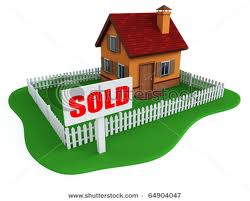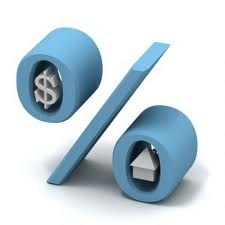Forget fevered bidding wars and snap home-buying decisions. Slower and steadier will characterize next year’s housing market.
That follows 2018 that started off hot but softened into the fall as buyers – put off by high prices and few choices – sat out rather than paid up.
Affordability issues will remain a top concern going into 2019, exacerbated by rising mortgage rates. But some of 2018’s more intractable issues will begin to loosen up. The volume of for-sale homes is expected to rise and diversify, while the number of buyers is forecast to shrink.
“For home sellers, they need to recognize those days of a frenzied market are over. They must price competitively to sell their home,” said Lawrence Yun, the chief economist at the National Association of Realtors. “For buyers, there will be challenges when it comes to rising interest rates, but they don’t have to make hurried decisions anymore.”
Still, some cash-strapped first-time buyers will simply be priced out, while a cohort of potential move-up buyers will decide to stay in their existing home, make renovations and enjoy their current low, low mortgage rate. Price increases will moderate and everyone in the market will need to adjust.
Here’s the bottom line
If you’re a seller: Price realistically and be ready to cut the listing price or offer other incentives to get a deal done. “It’s still a seller’s market but not like it was,” Hale said. “Sellers need to be mindful of competition, especially for more expensive properties.”
If you’re a buyer: Don’t worry about going slow when making decisions. “There is less buyer competition and more inventory,” Yun said. “Buyers can take time to find the home that fits into their budget.”
1. Finally, more homes to choose from
One of the biggest complaints among buyers in the last several years is that there weren’t enough homes for sale. In fact, the supply of houses hit historic lows in the winter of 2017 and has yet to rebound substantially. That fueled bidding wars, price increases, and frustration.
The supply crunch is expected to ease some in 2019 with inventory rising 10 percent to 15 percent, according to Yun. But the increase will be skewed toward the mid- to high- end of the market – houses priced $250,000 and higher – especially when it comes to newly built houses, said Danielle Hale, chief economist of realtor.com.
That’s good news for move-up buyers, but not so much for the first-time millennial buyer. “There’s still a mismatch on the entry-level side,” she said.
2. Houses in all shapes and sizes
If you’re a first-time buyer, you won’t be completely out of luck if you stay open-minded. If a single-family home is out of the question, consider a mobile home or townhouse as a starter home, both of which are on the rise.
The volume of shipments for manufactured houses – also known as mobile homes – is expected to finish above 100,000 this year, up from 93,000 in 2017, according to Robert Dietz, chief economist of the National Association of Home Builders. The trend is expected to continue next year.
These homes are also significantly cheaper than other home types. Not including land costs, the cost to buy a mobile home averages $70,600, compared with $257,900 for an existing single-family home and $309,700 for a new home.
You may also consider a townhouse, an attached single-family home located in a community of homes. Construction of townhomes also is experiencing year-over-year growth and is outpacing the single-family detached home market, Dietz said.
“The market is being supported by millennials moving from renting to their first-home purchase,” he said. “If you’re in a high-cost area with wage and job growth, townhouses are appropriate for entry-level. And they still get that suburban feel with their own front door.”
3. Affording a home remains hard
Housing values are still expected to increase next year, but not at the gang-buster pace seen in recent years. NAR’s Yun forecasts modest price growth between 2 percent and 3 percent, down from close to 5 percent this year and over 5 percent in 2017.
At the same time, mortgage rates are expected to hit 5.5 percent by the end of 2019. Both factors make it more expensive for buyers to purchase a home. Hale estimates that the expected increase in prices and interest rates translates to an 8-percent rise in the average monthly mortgage payment.
4. Interest rate trap
Shrinking affordability will convince some buyers – especially first-timers – to sit out the market altogether next year because they can’t make the numbers work.
Homeowners considering selling their home may also stay put because of rising mortgage rates – a so-called interest rate trap. Most outstanding mortgages have an interest rate of 4.5 percent or less, according to a report this year from Black Knight, a data analytics firm.
“They have a nice low mortgage rate, lower than the current rate, so there’s no reason to move,” said Mark Fleming, chief economist of First American Financial Corp., a provider of title insurance. “It’s essentially more expensive to buy their own home back.”
5. Tax worries linger
The first few months of 2019 will reveal exactly how the new tax changes affect homeowners. One key rule is the new cap on the mortgage interest deduction.
Before, homeowners could deduct the interest they paid on up to $1 million in mortgage debt – including interest on home equity loans and lines of credit – reducing their taxable income.
Now, you can only deduct interest on up to $750,000 in mortgage debt. Interest paid on home equity loans and lines of credit is deductible only if the funds were used to pay for home improvements or renovations.
The only taxpayers who will exceed those limits are high-end homeowners and buyers and those with multiple homes with mortgages.
The bigger question mark is if and how the $10,000 limit on state and local taxes deduction – known as SALT – will affect housing markets in high-tax states such as New Jersey, New York, Connecticut, and California.
Buyers may be reluctant to purchase homes in those states – or choose a smaller house – if they calculate they will pay too much in non-deductible taxes. “These states may see softer housing markets compared to the rest of the country,” said Yun, if the SALT cap hurts enough homeowners.


 English
English Chinese
Chinese Korean
Korean Hebrew
Hebrew Russian
Russian
